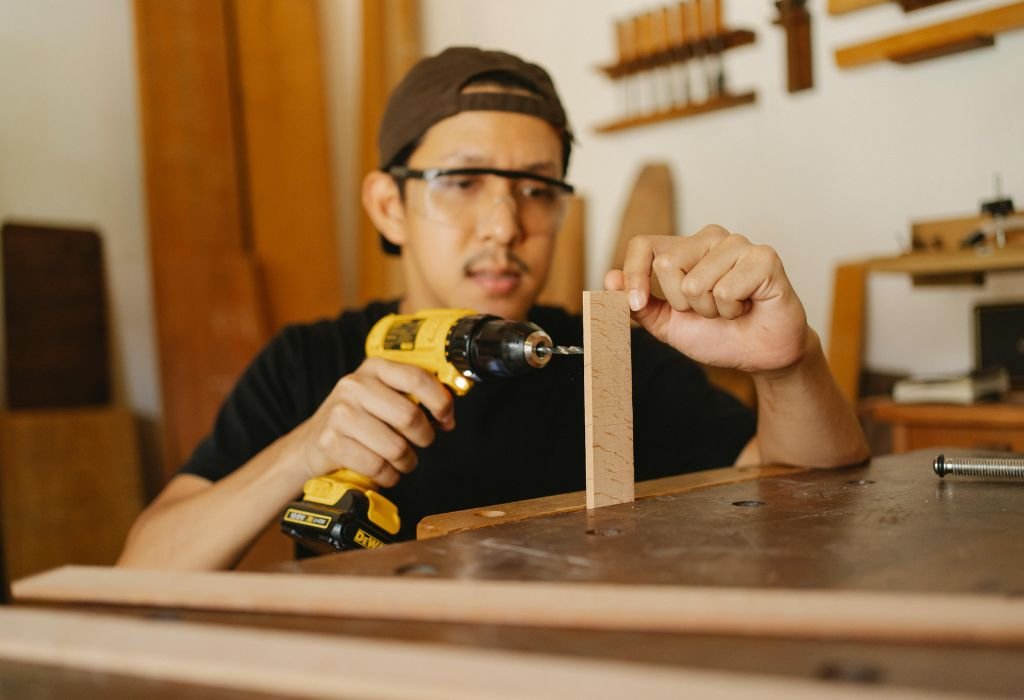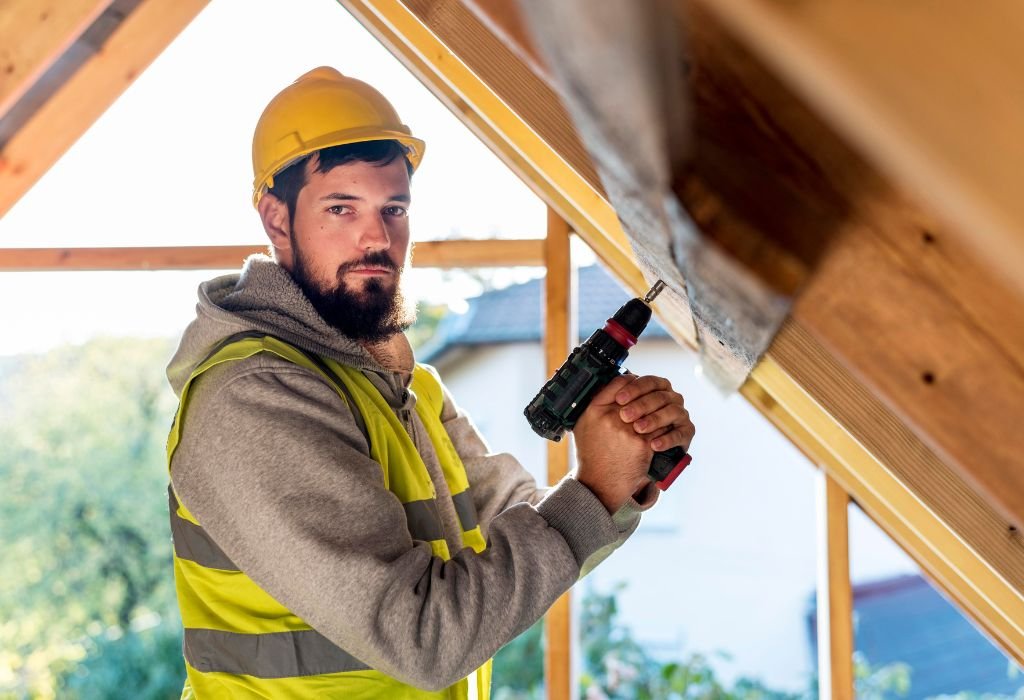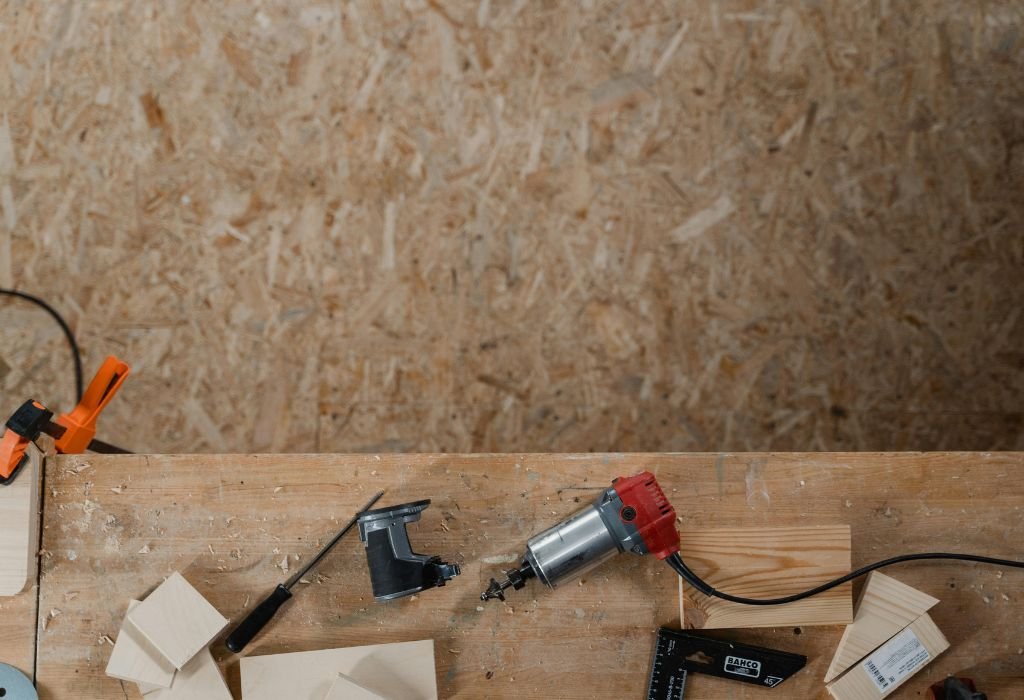A remodeler faces a frustrating drywall stud bay too tight for a standard drill, but the cordless Right Angle Drill slips in and gets the job done instantly.
That moment sparks three key considerations: can this tool truly reach tight spaces, is it powerful enough, and will it simplify future projects.
Cordless drills now account for over 70% of new tool purchases, driven by convenience and improved battery performance. (hbsdealer.com)
Professional trades report that right-angle models reduce workflow bottlenecks by up to 30% in cramped areas. (jlconline.com)
This guide answers what a cordless Right Angle Drill is, why experts rely on it, and how to choose the right one for your workflow.
What Is a Cordless Right Angle Drill?

A cordless Right Angle Drill is a specialized power tool with a head positioned at a 90-degree angle to the handle.
This design allows it to fit into tight spaces like between wall studs, floor joists, and inside cabinets where standard drills won’t reach.
Unlike corded models, the cordless version runs on rechargeable batteries, offering portability without sacrificing too much power.
Modern models come with features like variable speed triggers, torque settings, and LED lights for improved visibility.
These tools are widely used by electricians, plumbers, HVAC installers, and cabinet makers for drilling holes and driving screws in confined areas.
Compact head sizes—some as short as 3-3/4 inches—make them ideal for working in awkward corners and overhead spaces.
Why is the 90-degree design important?
It enables the drill to work in narrow or cramped areas where a regular drill cannot fit.
What is the main difference between corded and cordless right angle drills?
Cordless drills offer mobility and convenience, while corded drills typically provide continuous power for heavy-duty tasks.
What battery voltages are common for cordless right angle drills?
Typical models use 12V for light tasks, 18V/20V for general use, and 36V for heavy-duty applications.
Do compact head sizes make a big difference?
Yes, a smaller head size allows access to areas with limited clearance, improving efficiency.
Core Specs of a Cordless Right Angle Drill
A cordless Right Angle Drill has key specifications that determine its performance and suitability for various tasks.
The most important features include voltage, speed range, torque, chuck type, and head size.
Higher voltages like 18V or 20V models offer more power for drilling through wood, metal, or masonry, while 12V units focus on lightweight tasks.
Variable speed settings give users control for delicate fastening or aggressive drilling.
Torque ratings are essential because they prevent stripping screws or damaging materials.
Chuck sizes typically range from 3/8″ for compact designs to 1/2″ for heavy-duty applications.
A compact head design, often under 4 inches, allows access to spaces standard drills can’t reach.
What is the ideal voltage for most users?
For household or DIY projects, 18V or 20V models balance power and runtime effectively.
Does torque really matter in drilling?
Yes, higher torque ensures the drill can handle tough materials without stalling.
What’s the benefit of a two-speed gearbox?
Low speed offers more control for driving screws, while high speed works best for drilling holes quickly.
Is brushless motor technology worth it?
Absolutely, it provides longer runtime, better efficiency, and less maintenance than brushed motors.
Where a Cordless Right Angle Drill Shines (Use-Cases by Trade)
A cordless Right Angle Drill proves its value in places where standard drills can’t operate efficiently.
Electricians use it for drilling through studs to run wiring without tearing open walls.
Plumbers rely on it to create holes for pipes in narrow joist spaces or tight corners.
HVAC technicians use it for ductwork installation where clearance is minimal.
Cabinet makers and furniture builders benefit from the compact head when assembling boxes or frames in confined areas.
Automotive mechanics also use right angle drills to reach bolts and fasteners inside engine compartments.
Is it better than a regular drill for electricians?
Yes, it saves time when drilling multiple holes between closely spaced studs.
Can it handle plumbing projects?
Absolutely, it’s perfect for running water lines through tight joist areas.
Do cabinet makers really need one?
Yes, the compact design is ideal for assembling cabinets or furniture in tight spots.
Is it useful in car repairs?
Definitely, it reaches places standard drills cannot, especially in engine bays.
Choosing the Right Cordless Right Angle Drill

Selecting the best cordless Right Angle Drill depends on your projects, budget, and battery platform.
Voltage matters because higher-voltage drills handle bigger hole saws and tougher materials.
Compact 12V models work well for light fastening or tight cabinet assembly.
For general construction or remodeling, 18V or 20V models provide a balance of power and portability.
Heavy-duty users often choose 36V models for drilling large holes through thick joists or studs.
Other features to consider include chuck size, torque settings, LED lights, and brushless motors for efficiency.
Finally, staying within one battery ecosystem reduces costs because the same batteries power multiple tools.
Is 12V enough for most DIY projects?
Yes, if tasks involve small screws or thin materials.
Which voltage suits professionals best?
18V or 20V models handle most construction or remodeling work efficiently.
Why choose a brushless motor?
It increases battery runtime and tool lifespan while reducing maintenance.
Does brand ecosystem really matter?
Yes, it saves money when multiple tools share the same battery platform.
Bits & Accessories for a Cordless Right Angle Drill
A cordless Right Angle Drill becomes more versatile with the right bits and accessories.
Spade bits and auger bits work best for drilling through wood studs and joists.
Hole saws handle larger openings for pipes, wiring, and ductwork installations.
Right-angle adapters help convert standard drills into temporary right-angle tools for occasional use.
Flexible bit extensions reach awkward spots where even the compact head can’t fit easily.
Brush attachments clean surfaces or polish metal parts with the same drill body.
Magnetic bit holders speed up repetitive fastening jobs by keeping screws in place securely.
Do I need special bits for a right angle drill?
No, most standard drill bits and screwdriver bits work perfectly.
When should I use a hole saw?
When creating larger diameter openings for pipes, vents, or electrical boxes.
Are right-angle adapters worth buying?
Yes, but they are best for light-duty tasks, not heavy drilling.
What about flexible extensions?
They help reach extremely tight areas where even right angle drills struggle.
Safety & Ergonomics for a Cordless Right Angle Drill
Using a cordless Right Angle Drill in confined spaces requires proper handling and awareness.
High-torque applications can cause kickback if the bit binds suddenly.
Wearing safety glasses protects against flying debris during drilling.
Gloves improve grip and reduce vibration fatigue when working for long periods.
LED work lights help maintain accuracy in dark or hard-to-reach areas.
Side handles or auxiliary grips provide better control during heavy-duty drilling.
Maintaining a balanced stance prevents wrist strain and improves drilling accuracy.
Why is kickback a problem?
Because sudden binding can twist the drill and injure your wrist or arm.
Do side handles really help?
Yes, they give you more stability and leverage during drilling.
Are LED lights necessary?
They improve visibility in dark corners or tight compartments.
What’s the best way to reduce fatigue?
Use gloves, maintain a firm grip, and take breaks during long drilling tasks.
Model Snapshots & Buying Checklist

Several cordless Right Angle Drill models stand out for reliability, performance, and ease of use.
The Milwaukee M12 Right Angle Drill is known for its compact head size and strong torque in tight spaces.
DeWalt’s 20V MAX Right Angle Drill offers variable speed settings and brushless motor technology for longer runtime.
Makita’s 18V model combines power and ergonomic design for both DIY and professional use.
Metabo HPT’s 36V version includes advanced safety features and impressive drilling capacity for heavy-duty tasks.
When buying a cordless right angle drill, voltage, torque, head size, and brand battery platform compatibility should be top considerations.
Runtime, weight, and warranty coverage also help determine long-term value for both professionals and homeowners
Which cordless right angle drill is best for professionals?
Higher voltage models like Makita 18V or Metabo HPT 36V suit demanding projects.
Is a compact head always better?
Yes, it improves accessibility in tight or awkward spaces.
Do I need a brushless motor model?
Yes, for better efficiency, longer battery life, and reduced maintenance.
What warranty length should I look for?
At least three years is recommended for professional use.
Maintenance & Longevity for a Cordless Right Angle Drill
Proper care ensures your cordless Right Angle Drill lasts longer and performs efficiently.
Keep the drill clean by wiping off dust and debris after every use.
Store batteries in a cool, dry place and avoid extreme temperatures to prevent capacity loss.
Regularly check the chuck for wear, especially if you frequently swap bits.
Lubricate moving parts occasionally to keep the drill running smoothly.
Inspect the trigger and torque settings for consistent performance over time.
Charge batteries before they are completely drained to maximize their lifespan.
How often should I clean the drill?
After every project or at least weekly for professional use.
Do batteries need special care?
Yes, store them partially charged if not used for long periods.
Should I use the drill until the battery dies?
No, recharge before full depletion to extend battery life.
When should I replace worn-out drill bits?
Replace them as soon as they start slipping or cutting inefficiently.
Cordless Right Angle Drill vs. Right-Angle Attachment
A cordless Right Angle Drill is a complete tool designed for heavy-duty work in tight spaces.
Right-angle attachments convert a regular drill into a temporary right-angle tool.
Attachments are more affordable but usually lack the torque and durability of dedicated drills.
Professionals prefer full right-angle drills for frequent or demanding projects because they offer better control and reliability.
Attachments work well for occasional tasks where buying a dedicated tool isn’t justified.
Are attachments cheaper than full drills?
Yes, they cost less but offer limited power and durability.
When should I use an attachment instead of a full drill?
For light-duty or occasional tasks where space is tight but workload is minimal.
Do attachments fit all drills?
Most standard right-angle adapters work with common cordless drills.
Which option lasts longer?
Dedicated right-angle drills generally outlast attachments under heavy use.
Future Trends in Cordless Right Angle Drill Technology

The cordless Right Angle Drill market is moving toward more powerful yet compact designs.
Battery technology continues to improve, offering longer runtime and faster charging.
Brushless motors are becoming standard, increasing efficiency and reducing maintenance needs.
Manufacturers are adding electronic safety features to prevent kickback injuries during drilling.
Smart tools with Bluetooth connectivity may soon track usage data and maintenance schedules automatically.
Will cordless drills fully replace corded models?
Most likely, as battery performance continues to improve.
Are safety features getting better?
Yes, torque sensors and anti-kickback systems are becoming more common.
Will drills get smaller and lighter?
Yes, compact designs remain a top priority for manufacturers.
Could smart technology come to drills?
It’s possible, with features like usage tracking and battery health monitoring on the horizon.
FAQs on Cordless Right Angle Drill
1. What is a cordless Right Angle Drill used for?
It’s used for drilling and fastening in tight or hard-to-reach spaces where a standard drill won’t fit.
2. How is a cordless Right Angle Drill different from a regular drill?
It has a 90-degree angled head, allowing drilling in confined areas that straight drills can’t access.
3. Which voltage is best for a cordless Right Angle Drill?
12V is fine for light tasks, while 18V or 20V models handle most professional projects efficiently.
4. Can I use a cordless Right Angle Drill for woodworking?
Yes, it’s perfect for cabinet making, furniture assembly, and drilling pocket holes.
5. Is a brushless motor better for cordless Right Angle Drills?
Yes, brushless motors provide more power, efficiency, and longer battery life.
6. How long does a cordless Right Angle Drill battery last?
Most batteries last 1–2 hours of continuous use, depending on voltage and workload.
7. Can I use standard drill bits in a cordless Right Angle Drill?
Yes, it accepts standard bits, spade bits, hole saws, and even specialty attachments.
8. Are cordless Right Angle Drills good for electricians?
Absolutely, they make running wires through tight stud bays much easier.
9. Can plumbers use cordless Right Angle Drills for pipe installations?
Yes, they’re widely used for drilling joists and walls when running pipes.
10. Do I need a side handle for a cordless Right Angle Drill?
A side handle provides better control during heavy-duty drilling tasks.
11. How compact are cordless Right Angle Drills?
Some models have head sizes as small as 3–4 inches for maximum clearance.
12. Can I use a cordless Right Angle Drill on metal surfaces?
Yes, with the right drill bits and torque settings, they handle metal easily.
13. Are there right-angle drill attachments available?
Yes, adapters exist, but dedicated cordless Right Angle Drills offer better power and durability.
14. What’s the main benefit of a two-speed gearbox?
Low speed offers better torque for driving screws, while high speed suits drilling holes faster.
15. How do I maintain a cordless Right Angle Drill?
Keep it clean, store batteries properly, and replace worn-out bits regularly.
16. Is LED lighting useful on a cordless Right Angle Drill?
Yes, built-in LEDs help improve accuracy in dark or tight spaces.
17. How much torque do I need in a cordless Right Angle Drill?
Higher torque is better for heavy-duty drilling, especially in wood or masonry.
18. Are 36V cordless Right Angle Drills worth it?
Yes, for professionals handling large holes and continuous heavy workloads.
19. What safety precautions should I follow?
Wear goggles, use side handles, and avoid binding the bit in dense material.
20. Can automotive mechanics use cordless Right Angle Drills?
Yes, they’re perfect for working in engine bays and tight vehicle compartments.
21. What chuck size should I choose?
3/8″ suits light work, while 1/2″ handles larger bits and heavy-duty drilling.
22. Do cordless Right Angle Drills have torque settings?
Yes, many models feature adjustable clutches for precision and control.
23. How long does it take to charge a battery?
Most modern batteries charge in 30–60 minutes using fast chargers.
24. Can I drill concrete with a cordless Right Angle Drill?
Only if the model has enough power and the correct masonry drill bit.
25. Are cordless Right Angle Drills expensive?
Prices vary by brand and voltage, but entry-level models start under $150, while pro models cost more.
Conclusion
The cordless Right Angle Drill has become an essential tool for electricians, plumbers, carpenters, and DIY enthusiasts alike.
Its compact head, powerful motor options, and cordless convenience make it perfect for tight spaces and challenging projects.
Choosing the right voltage, chuck size, and features ensures you get the best performance for your needs.
With proper maintenance, the tool will deliver reliable service for years while adapting to future battery and motor innovations.
Invest in a quality cordless Right Angle Drill today and make every drilling project faster, safer, and more efficient.

I’m John F. Nicholas, the founder, lead writer, and drill enthusiast behind 101drill.com. With years of hands-on experience in power tools and DIY projects, I created this platform to share practical knowledge, expert tips, and real-world insights to help others master the art of drilling.
